Blockchain for Beginners
Assuming that you've heard of Bitcoin, the dominant "top-dog" of the cryptocurrency market; you may or may not know that Bitcoin is run off of what is called the Blockchain. All cryptocurrencies like Bitcoin, Litecoin, Ethereum, etc... are all run on the Blockchain.
Now most people go through this sort of funnel when they first hear about the Blockchain:
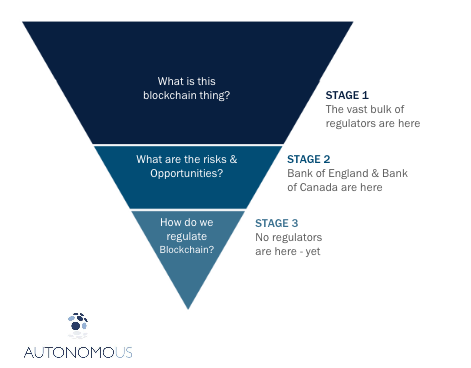
Most of us as individuals are within the first section, "What is this Blockchain thing?"
First off: Bitcoin is NOT Blockchain OR visa versa!
But before we get into what Blockchain is, or even how cryptocurrency relates to it, let's go over what money really even is (and how we manage it). Instead of bartering for goods (my 4 goats are worth your 1 daughter or whatever), we have designed a way to exchange value by attaching value to the "dollar". The dollar is simply a government-created paper note that showed how much gold it represented. $1=less gold shares $100=more gold shares as an example.
"For approximately 4,000 years and across the globe, people used shells known as “cowries” as currency. They were beautiful, unique, and could not be manufactured. Later (almost 2,000 years ago), in and around Egypt, wheat was used as a currency. Wheat, being a common and important part of our diet, was valuable, portable and exchangeable. Today, governments authorize their bills as legit, and because we have faith in our governments and banks, we use their money."
"Ultimately, the worthless bills are just an idea backed by confidence." - Dani Amsalem
This idea that bills are simply backed by "confidence" is one way of describing how we assign value to currency.
Since the USD hasn't been backed by gold since 1973, we simply exchange the dollar as a placeholder. Now, besides the currency itself, there is a system in place (banks) that track who has money, who doesn't, who gives money to whom, and who receives it.
It has been said that 'blockchain will do for transactions what the Internet did for information'.
And that... "What the internet did for communications, blockchain will do for trusted transactions.” - Ginni Rometty
Blockchain is shared, decentralized and secure.
The BLOCKCHAIN is basically a ledger that is distributed to everyone, kind of like and Excel Spreadsheet. The information is shared and viewable to all whom wish to look at it. Now the ledger can only be changed when it is voted for amongst the group. That makes it more secure, democratic, and it means there's no need for a central authority to approve transactions like the World Bank Organization. This 'ledger' facilitates record-keeping for transactions and tracks assets.
An asset could "material", whether it be a house, real-estate, a car, or something else. Then an asset can be also be something like an idea, a brand, a logo, a patent or something like virtual real-estate. Pretty much all assets, whether they be material or immaterial, can be tracked within the blockchain. When you wish to trade something within the blockchain network, this is also tracked and viewable by anyone who wishes to see.
Most traditional currencies use banks to keep these transaction histories and ledgers, to fight against credit card fraud, and to exchange money between persons.
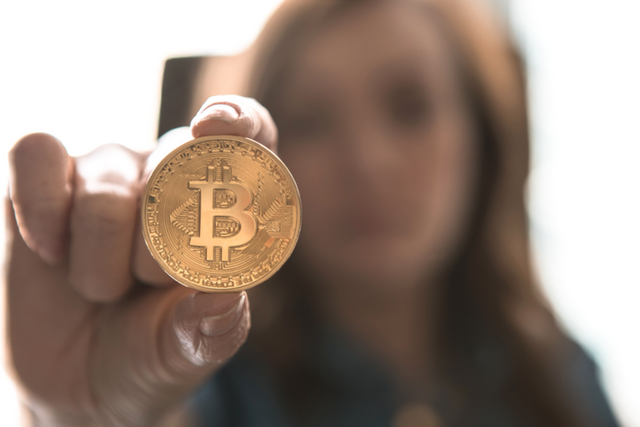
In 2009 Bitcoin emerged. No one really knew what it was or who made it really. It was (and is) a digital currency that was created by someone(s) under the alias "Satoshi Nakamoto". Bitcoin was built ON the blockchain system, and was the first "thing" to be built on such a system.
Blockchain has greater transparency and reduces infrastructure costs
To summarize and simplify, Blockchain Geeks have summed it up nicely with their infographic below:
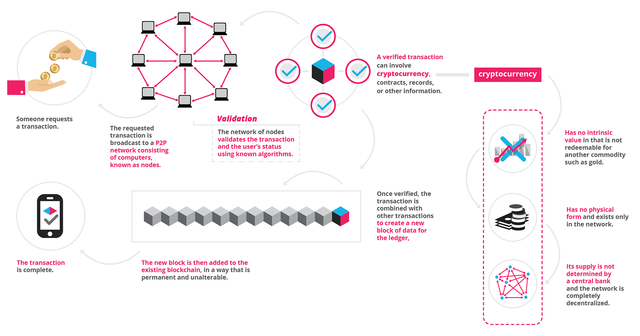
Step-By-Step Blockchain Breakdown
1) Someone requests a transaction
When someone requests a transaction, to purchase something or exchange "stocks" between cryptocurrencies...
2) The requested transaction is then broadcasted to a P2P (Person to Person) Network made up of computers, known as "nodes".
This means that anyone can be a "node". These people who verify transactions are called "Miners".
3) Validation: The network of nodes (computers) validates the transaction and the user's status using known algorithms.
This validation is a key component which expands the democratic, transparent and decentralized system.
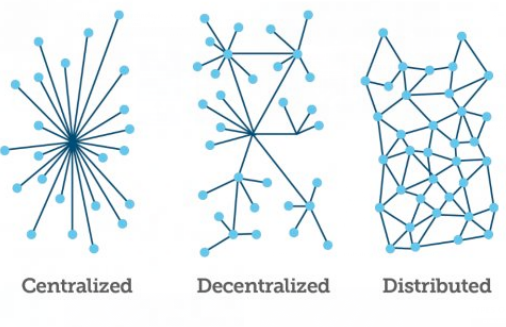
In the centralized version, if the main node or server set were to fall or be comprised then the whole system would go down. The decentralized version, if one node falls - the system remains intact. The more users to verify the transactions the stronger the Blockchain becomes.
4) A verified transaction can involve cryptocurrency, contracts, records, or other information.
***This is where cryptocurrency comes in. It has no intrinsic value, in that it is not redeemable for another commodity such as gold. It has no physical form and exists only in the network. Its supply is not determined by a central bank and the network is completely decentralized.***
5) The new block is then added to the existing blockchain, in a way that is permanent and unalterable.

Every action that is taken or logged within the network is noted by nodes (computers that verify the transactions/actions within the network) and is locked within the chain and un-alterable and transparent to the whole of the network.
6) The transaction is complete!
Platforms like Steemit are on the Blockchain
Which means that everything that you do within the network like: posting, commenting, liking etc... is logged within the network. On Steemit the actions you take that are logged within the network make you money!

Stay tuned for part 2!
and don't forget to

Sources:
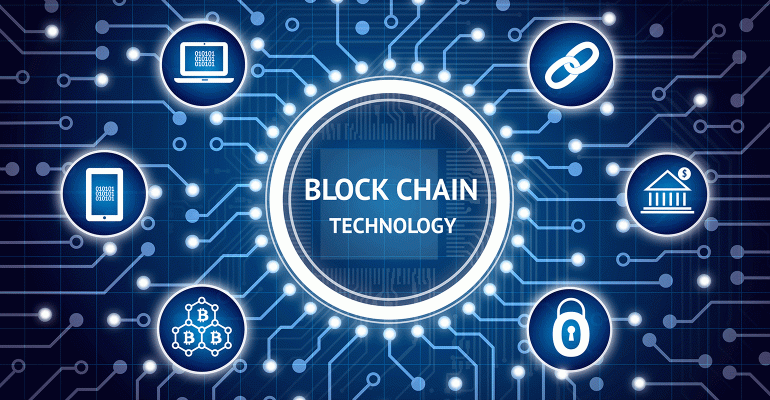
Congratulations! This post has been upvoted from the communal account, @minnowsupport, by MissVenturous from the Minnow Support Project. It's a witness project run by aggroed, ausbitbank, teamsteem, theprophet0, someguy123, neoxian, followbtcnews, and netuoso. The goal is to help Steemit grow by supporting Minnows. Please find us at the Peace, Abundance, and Liberty Network (PALnet) Discord Channel. It's a completely public and open space to all members of the Steemit community who voluntarily choose to be there.
If you would like to delegate to the Minnow Support Project you can do so by clicking on the following links: 50SP, 100SP, 250SP, 500SP, 1000SP, 5000SP.
Be sure to leave at least 50SP undelegated on your account.